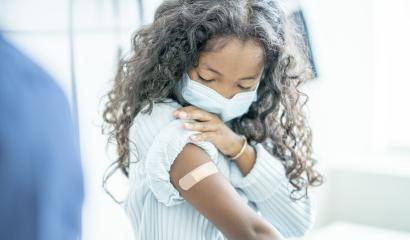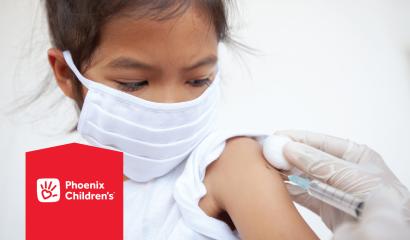Bright Futures
Articles and Updates from Phoenix Children's
Many of life’s most important lessons are learned in kindergarten, and handwashing is no exception. Handwashing is one of the most effective methods of infection prevention. However, if kindergarten was the last time you took pointers on effective handwashing, you may benefit from a refresher course.
Waterless hand sanitizer vs. soap and water
Back in April, hand sanitizers were the hottest (and most scarce) commodity at grocery and convenience stores—and for a good reason. Hand sanitizer is a quick and convenient—and portable—way to clean your hands. You can keep a bottle in your car, purse or even on a keychain. It is important to ensure that you use a hand sanitizer with at least 60% alcohol (usually isopropyl alcohol), as this is the required threshold to kill most germs, which includes the COVID-19 virus. When using hand sanitizers, thoroughly rub all the surfaces of your hands until the solution evaporates (basically until your hands feel dry) to ensure effective disinfection.
While waterless hand sanitizers are a quick and convenient alternative, they are not as effective as washing with regular soap and water, and they may not be effective against certain germs. The traditional soap and water method is superior in its ability to kill and remove bacteria and viruses from your hands. If soap and water are readily available, always choose this option even if it may take a little longer to perform. Also, if your hands are visibly dirty, skip the hand sanitizer and go with regular soap and water.
Handwashing pro tip: You can pass on soaps labeled “antibacterial”, as studies show they have no added benefit, and regular soap is effective at removing illness-causing germs and preventing people from getting sick.
Be sure to store these alcohol-based hand sanitizers in safe places that are out of reach of young children, as ingesting or swallowing these ingredients can be harmful.
Handwashing like a pro
Handwashing seems pretty straightforward, but just adding soap and rinsing won’t do the trick. Good hand washing actually has technique involved if you want to effectively remove bacteria and viruses, which includes the COVID-19 virus:
- Rinse off any visible dirt with water.
- Apply soap to your hands and thoroughly scrub all surfaces of your hands, like palms, the backs of your hands and wrists for 20 seconds. (Your kindergarten teacher may have told you that 20 seconds is about the time it takes to sing the “Happy Birthday” song twice.)
- During your 20-second scrub time, make sure you scrub under your fingernails and between your fingers, as these are frequently missed areas and great hideouts for germs.
- Rinse off all soap and dry your hands. In public restrooms, if using paper towel to dry your hands, use the same paper towel when you’re done drying your hands to turn off the water.
Best times to wash hands
Keeping your children’s hands clean throughout the day is also crucial, because children frequently touch their mouth, nose and eyes. There are, however, a few specific times throughout the day that you should make it a habit to stop and wash hands:
- After using the bathroom or changing diapers
- Before eating (snacks included!)
- After a cough or sneeze
- After returning from a public place (like school, playground or a grocery store)
- After touching an animal, animal feed or treats or animal waste
- After touching garbage
Following these simple handwashing tips is one of the most important methods of preventing infections and will help keep you and your family healthy.


